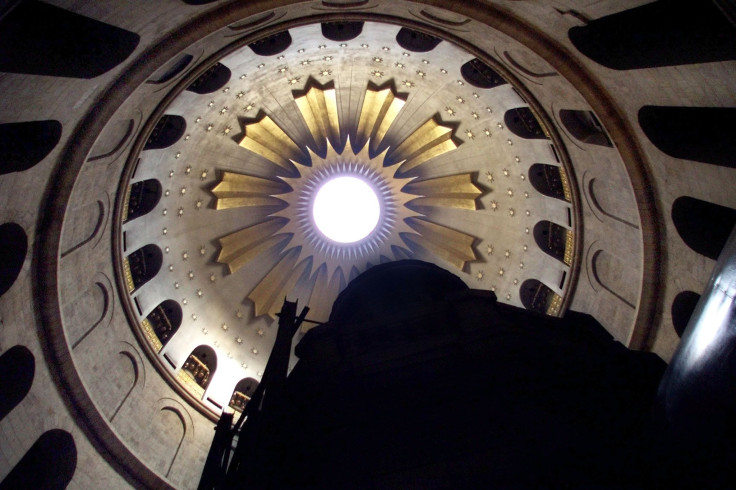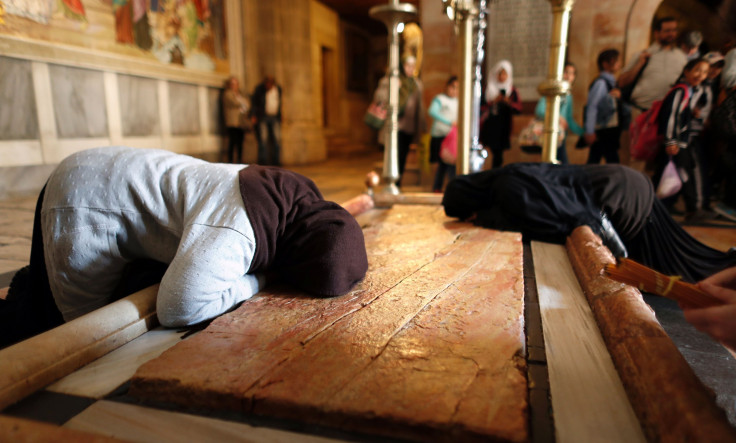Jesus Christ’s ‘Burial Bed’: Original Surface Of Christianity’s Most Sacred Site To Be Examined

The original surface of what many Christians believe is the tomb of Jesus Christ, located in the Church of the Holy Sepulchre in the Old City of Jerusalem, has been exposed for the first time in centuries. The restoration project, which is being filmed by National Geographic, will give scientists an unprecedented opportunity to study the original surface of what is considered the most sacred site in Christianity.
According to Christian belief, the body of Christ was laid on a shelf — or a “burial bed” — following his crucifixion by the Romans. The analysis of the original rock may enable researchers to better understand the original form of the tomb chamber, National Geographic wrote on its website.
"The marble covering of the tomb has been pulled back, and we were surprised by the amount of fill material beneath it,” Fredrik Hiebert, archaeologist-in-residence at the National Geographic Society, a partner in the restoration project, said. “It will be a long scientific analysis, but we will finally be able to see the original rock surface on which, according to tradition, the body of Christ was laid."
The burial shelf is now enclosed by a small structure known as the Edicule, a word that comes from the Latin aedicule, meaning little house, which was last reconstructed in 1808-1810 after being destroyed in a fire.

Restoration is underway for the Edicule and the interior of the tomb by a team of scientists from the National Technical University of Athens, under the direction of chief scientific supervisor, professor Antonia Moropoulou.
"We are at the critical moment for rehabilitating the Edicule," Moropoulou said. "The techniques we're using to document this unique monument will enable the world to study our findings as if they themselves were in the tomb of Christ."
The structural integrity of the chapel built above and around the burial cave where Christians believe Jesus was buried and resurrected himself has been of a concern for decades. Earlier this year, communities of the Church of the Holy Sepulchre agreed to restore the structure with work to be completed by the spring of 2017.
© Copyright IBTimes 2024. All rights reserved.





















